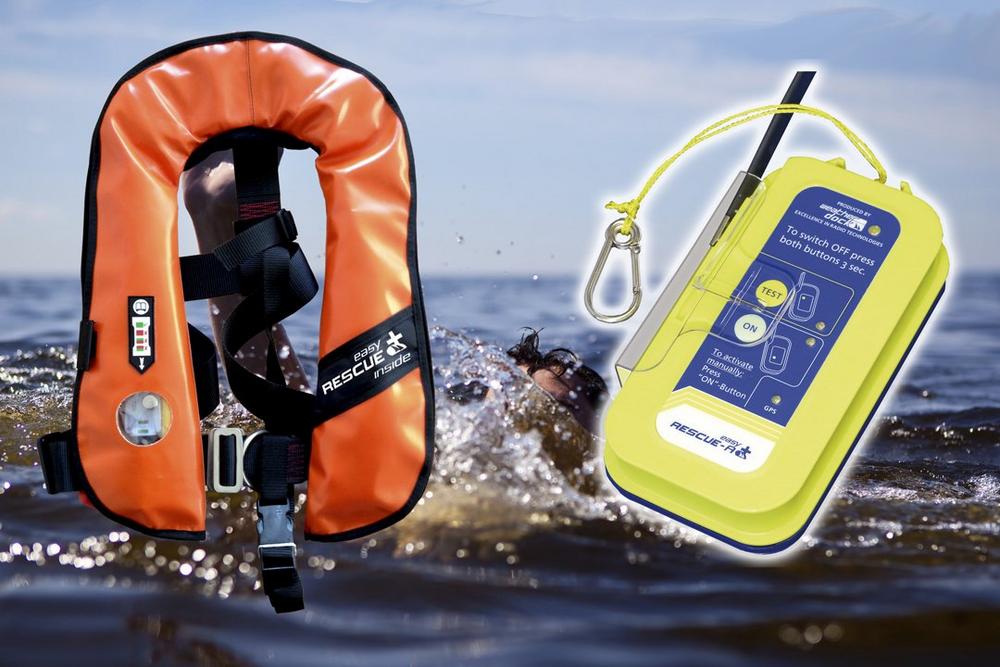AIS SART (Search and Rescue Transmitter) or AIS MOB (Man over Board PLB)
The IMO has got a clear definition for an AIS PLB to be named AIS SART. A safety related product has to fulfill all 35 test scenarios of SOLAS (Safety Of life At Sea) classification successfully to be listed at MarED (Maritime Electronic Devices) and to be named AIS SART. If not passed successfully the full range or if there are only some of the tests have been done, it is not allowed to name the product AIS SART. Sometime on the packaging there are sentences like “tested according SOLAS”. This indicates that this product is not a real AIS SART. Please pay attention of this. Non SOLAS listed AIS PLBs have to be named AIS MOB – nothing else. Wrong classified safety related products are not reliable as they seem to be. By calling them AIS SART for any marketing issue will suggest a better performance than it really is.
Transmission Power – radiated power vs. generated power
Transmission power will be generated on the layer circuit. But there is a regular physical loss of the signal strength before reaching the antenna shaft for transmitting. This loss would be about 3db which means approx. 50% or more.
Let’s take an example for better understanding. Signal strength of 1 Watt generated on the layer will be transmitted with 0.4 Watt from the antenna which is not that much. 1 Watt radiated power needs more than 3 Watt generated, because of the loss. Keep in mind that real AIS SART units need to have at least 1 Watt radiated power or more. As less the transmission power the shorter the transmission range. Just imagine to fall over board from a vessel with 6 knots speed over ground and drifting away in the current with 2 knots. How long does it take until your vessel has left the transmission range of your wrong defined AIS PLB?
Automatic Activation
Some AIS PLB devices in the market need to be prepared manually for an automatic activation if the unit is submerged. Without preparation – no activation – which can cost a life at sea.
In our understanding electronic personal life saving equipment needs to run fully automatic without any preparation. Falling overboard by accident and getting unconscious is probably the worst thing could happened. Just imagine your rescue beacon needs a button pushed or a cord ripped off to start transmitting the emergency signal – no way! And of course such an equipment need to float without any additional buoyancy support.
If you are going to buy safety related products like AIS PLBs, please inform yourself very detailed to buy the right one.
Weatherdock has got a fully certified AIS SART unit easyRESCUE with different additional alerting systems and the AIS MOB easyONE (AIS + DSC) which has the best performance figures in the AIS MOB market.
Weatherdock Cooperation, Germany (Founded 2003)
– World leader in AIS based, commercial vessels approved, personal locator beacons in the VHF band
– Founder of the year 2008
– Among the best 100 midsize companies in Germany (12.000 applicants for that award!)
– Winner of the 2018 Bavarian Export Award in Category "Industry"
Weatherdock AG
Emmericher Strasse 17
90411 Nürnberg
Telefon: +49 (911) 376638-30
Telefax: +49 (911) 376638-40
http://www.easyais.de
Leitung
Telefon: +49 (911) 376638-32
E-Mail: mknipp@weatherdock.de
CEO
Telefon: +49 (911) 376638-30
E-Mail: akotouczek@weatherdock.de
